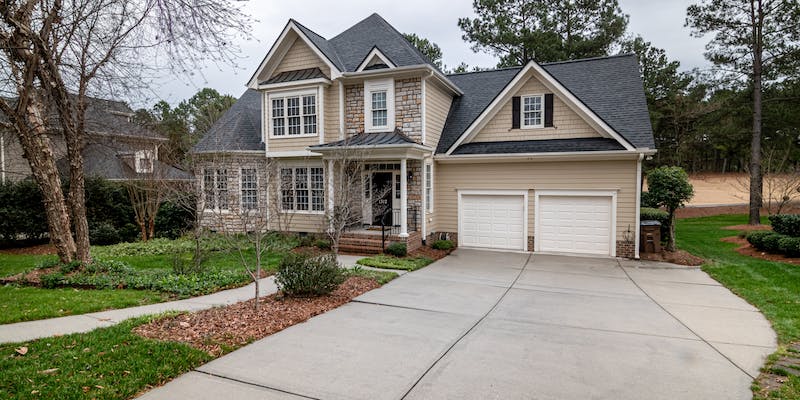Considering mortgage refinance? The 15-year option is gaining popularity, promising to shave years off your mortgage journey. In this guide, we'll explore the pros and cons of refinancing a 15-year mortgage, helping you decide if it's the right move for you. Let’s get started!
The Basics of a 15-Year Mortgage
A 15-year mortgage is exactly what it sounds like—a home loan with a fixed interest rate and a 15-year repayment period. It offers the advantage of quicker homeownership compared to the more traditional 30-year mortgage.
Pros of Refinancing to a 15-Year Mortgage:
Faster Debt Repayment:
The main perk is the accelerated repayment schedule. You'll pay off your mortgage in half the time, building equity at a lightning pace.
Lower Interest Payments:
A shorter loan term often means a lower interest rate. This can translate to significant savings over the life of the loan compared to a 30-year mortgage.
Long-Term Savings:
While monthly payments might be higher, the overall interest paid over the life of the loan is substantially less, leading to long-term savings.
Cons to Consider for 15-Year Mortgage
Higher Monthly Payments:
With a shorter repayment period, monthly payments are higher. Ensure your budget can accommodate the increased financial commitment.
Reduced Flexibility:
Higher monthly payments can limit your financial flexibility. It's important to have a stable income and emergency savings to handle unexpected expenses.
Opportunity Cost:
Opting for a 15-year mortgage may mean missing out on potentially higher returns from investing extra money in other ventures. Consider your overall financial strategy.
Financial Stability:
Assess your financial stability. If your income is consistent and you have a healthy emergency fund, a 15-year mortgage might be a manageable choice.
Future Plans:
Consider your future plans. If you anticipate major life changes, like career shifts or family expansion, a 30-year mortgage might offer more flexibility.
Risk Tolerance:
Evaluate your risk tolerance. While a 15-year mortgage offers long-term savings, it requires a commitment to higher monthly payments. Ensure it aligns with your comfort level.
Personalized Advice:
Every financial situation is unique. Consult with a mortgage professional to get personalized advice based on your specific circumstances and goals.
How to Refinance a 15-year Mortgage?

Dreaming of a mortgage-free future? Refinancing a 15-year mortgage might be the key. In this step-by-step guide, we break down the process into simple, actionable steps to help you make the switch and accelerate your journey to debt-free homeownership.
Evaluate Your Finances:
Start by evaluating your monthly budget. Can you comfortably handle higher monthly payments? Ensure your financial stability before diving into the refinancing process.
Check Your Credit Score:
A good credit score opens doors to favorable interest rates. Obtain a copy of your credit report, address any discrepancies, and work on improving your score if needed.
Understand Your Current Mortgage:
Collect essential details about your current mortgage, including the outstanding balance, interest rate, and loan terms. This information is crucial for comparing options.
Check for Prepayment Penalties:
Review your existing mortgage agreement for any prepayment penalties. Understanding potential fees will help you make an informed decision.
Explore Lender Options:
Research lenders and compare their 15-year mortgage rates. Consider factors like closing costs, customer reviews, and responsiveness during your search.
Gather Loan Estimates:
Request loan estimates from multiple lenders. This document outlines the terms of the loan, helping you make an apples-to-apples comparison.
Calculate Savings and Affordability:
Utilize online mortgage calculators to estimate your new monthly payments and potential savings over the life of the loan.
Factor in Closing Costs:
Consider closing costs associated with refinancing. Evaluate whether the overall savings justify the upfront expenses.
Submit Your Application:
Prepare the required documentation, including income statements, tax returns, and asset information. Having these ready streamlines, the application process.
Submit Your Application:
Once you've chosen a lender, submit your application. Be prompt in providing any additional information requested to expedite the approval process.
Lock in Your Interest Rate:
Once your application is approved, consider locking in your interest rate. This protects you from potential rate increases during the closing process.
Understand Rate Lock Terms:
Familiarize yourself with the terms of the rate lock, including its duration. Ensure you can complete the closing process within this timeframe.
Review Closing Documents:
Carefully review the closing documents before attending the closing meeting. Clarify any questions or concerns with your lender.
Sign and Finalize:
Sign the necessary documents during the closing meeting, officially completing the refinancing process.
Celebrate Your New Mortgage:
With your new 15-year mortgage in place, adjust your budget to accommodate the higher monthly payments. Consider the long-term benefits of accelerated debt repayment.
Monitor Your Finances:
Stay vigilant about your financial health. Regularly monitor your budget and reassess your financial goals as you enjoy the journey to a mortgage-free future.
Differences Between 15-year and 30-year Mortgage Payments

Selecting the right mortgage term is a critical decision that directly impacts your financial future. In this comparison, we'll break down the differences between 15-year and 30-year mortgage payments, helping you make an informed choice that aligns with your goals and budget.
The Basics:
15-Year Mortgage:
- Shorter term with higher monthly payments.
- Faster debt repayment and substantial interest savings over the life of the loan.
30-Year Mortgage:
- Longer term with lower monthly payments.
- Extended repayment period and higher overall interest paid compared to a 15-year mortgage.
Monthly Payments:
15-Year Mortgage:
- Higher monthly payments due to the condensed repayment schedule.
- Builds home equity rapidly, contributing to quicker homeownership.
30-Year Mortgage:
- Lower monthly payments, making it more budget friendly.
- Slower equity buildup compared to a 15-year mortgage.
Interest Rates:
15-Year Mortgage:
- Typically, lower interest rates compared to 30-year mortgages.
- Results in overall interest savings over the life of the loan.
30-Year Mortgage:
- Higher interest rates than 15-year mortgages.
- Spreads interest payments over a more extended period, increasing the total interest paid.
Conclusion
Refinancing a 15-year mortgage is a strategic move that offers faster homeownership and potential savings. However, it's not a one-size-fits-all solution. Consider your financial stability, future plans, and risk tolerance before making this commitment. Consult with a mortgage expert to ensure you're making the right choice for your individual journey.



